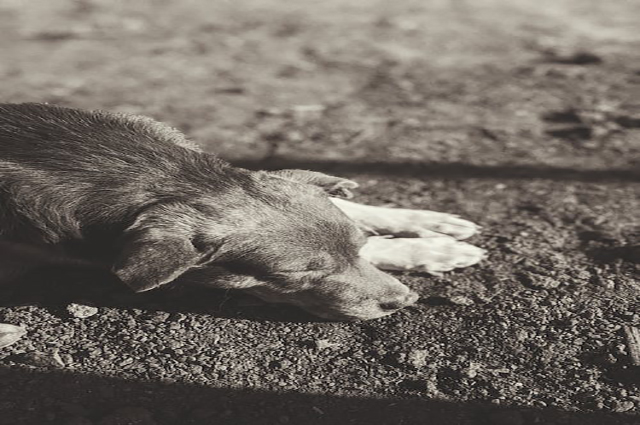Abstract:
In order to study the failure criterion of porous surrounding rock of tunnel in cold regions under the action of low temperature frost heave,the frost heave force and stress intensity factor of surrounding rock are solved based on frozen rock mechanics,fracture mechanics and meso-damage mechanics. The stress corrosion limit of rock instead of fracture toughness is taken as the crack initiation criterion. Under the action of single frost heave,the frost heave failure criterion of surrounding rock is established for the“main-side branch”pore structure which is prone to frost heave failure; Under the action of continuous frost heave,it is regarded as freeze-thaw cycle,the effect of rock debris loss during the cycle is considered,and the frost heave failure criterion of surrounding rock is established. Relying on the verification of the reliability of the instability criterion of a tunnel in a cold region of Tibet,it is found that the stress intensity factor of surrounding rock calculated by traditional fracture mechanics may be quite different from the real value. The above engineering examples are used to analyze the effect of different parameters on the stress intensity factor of surrounding rock. The results show that the stress intensity factor of surrounding rock is proportional to the axis diameter of main hole and water pressure. The growth rate of the stress intensity factor of the former in the initial stage is significantly higher than that in the late stage,while the latter increases almost linearly; It is inversely proportional to the ambient temperature and toughness ratio of surrounding rock,and the effect of temperature on surrounding rock instability is more obvious.The research results can improve the understanding of the frost heave failure characteristics of surrounding rock and improve the theoretical basis for the long-term stability of tunnel engineering in cold regions.
Keyword:
frost-heave fracture damage; capillary freezing; meso damage mechanics; main-side branch pore structure; stress corrosion limit of rock; groundwater; porous surrounding rock of tunnel in cold region; influence factor;
Author:
SHU Jiajun( 1998—) ,male,graduate student,mainly engaged in the research of fracture mechanics and frozen rock mechanics.
DENG Zhengding( 1987—) ,Male,lecturer,doctor,mainly engaged in the research of rock fracture direction.
Fund:
江西省教育厅科学技术研究项目(GJJ170562);
Citation:
SHU Jiajun,DENG Zhengding,WU Bingni. Fracture criterion of tunnel surrounding rock with pores in cold regions[J]. Water Resources and Hydropower Engineering,2022,53( 3) : 176-184.
舒佳军,邓正定,伍冰妮. 寒区隧道孔隙围岩冻胀起裂破坏判据( 英 文) [J]. 水 利 水 电 技 术( 中 英 文) ,2022,53 ( 3) : 176-184.
1 Introduction
The northeast and western regions of China are generally regarded as cold regions.In recent years, due to the strategic deployment of northeast revitalization and western development, the state has successively built the various railway and highway tunnels in the northeast and Qinghai, Tibet regions. This kind of tunnel is usually located in high altitude or low temperature areas, and it is subject to low-temperature frost heaving after completion. And the meso pores in the surrounding rock will easily cause instability and damage or even tunnel collapse after the frost heave load. For example, due to the high water content and low temperature freezing and thawing of the surrounding rock of Yangqu Tunnel in Shanxi Province, the roof fall of the left line occurred in the face of palm before construction. The tunnels in cold regions such as the Guanjiao Tunnel and the Qidaoliang Tunnel also suffered varying degrees of frost damage.
The water in the surrounding rock freezes at low temperature and produces frost heaving force. The pores crack and expand under the action of frost heaving, which leads to the instability of surrounding rock. The instability and failure of surrounding rock is one of the main disasters of tunnel in cold regions. Therefore, it is important to carry out the research on frost heaving damage of surrounding rock in cold regions for tunnel safety. The key to judge whether the surrounding rock cracks is to establish the calculation model of frost heaving force. For the analysis of frost heave force, relevant scholars have conducted research in theoretical calculations, laboratory tests and numerical simulations. For example, Feng et al. established two models of tunnel excavation and frost heave and believed that the total stress field of frost heave is equal to two the sum of the sub-stress fields of each model. Hu et al. concluded that the sidewall frost heave model is the most suitable frost heave force calculation model in steeply inclined formations through laboratory test data. According to the principle of linear elastic superposition, Lyv et al. established an analytical solution for the frost heave force and stress distribution of tunnels in cold regions under the action of non-axisymmetric stress and transversely isotropic surrounding rock frost heave. Xia et al. proposed the isotropic frost heave characteristics of saturated rock under unidirectional freezing conditions, and used the anisotropic frost heave coefficient to consider the frost heave of surrounding rock and derive the analytical solution of the frost heave force of tunnels in cold regions. Wang et al. relied on the Jinjiazhuang spiral tunnel to establish a frost heave force calculation model using a combination of indoor tests, temperature tests and COMSOL numerical simulations, and analyzed the influence of phase change latent heat and water-bearing cracks on the internal force of surrounding rock. Liu et al. proposed a calculation method for the frost heave force of surrounding rock under different freeze-thaw cycles based on the theory of circular hole expansion, Griffith fracture theory and meso-damage mechanics. The above analysis method only obtains the frost heaving force of surrounding rock at low temperature, and needs to consider that the first frost heaving does not damage the surrounding rock of the tunnel. Feng et al. took into account the anisotropic frost heave characteristics of surrounding rock in the analysis of tunnel frost damage, and used the displacement release coefficient to indirectly quantify the influence of construction on frost damage. The elastic-plastic solution of stress and deformation of surrounding rock is solved by modifying the constitutive equation of frozen rock and D-P criterion. The results showed that the plastic radius and frost heave force were smaller when considering anisotropy than when not considering. Zhao et al. believed that the coupling of heat and moisture caused by phase transition of water ice was the main cause of frost heave instability of tunnel in cold regions. Based on three main frost heave theories, the multi-factor analytical solution of heat and moisture coupling is put forward, and the calculation method of equivalent elastic coefficient of frozen ice based on difference method is deduced. Zhu et al. equivalent the tunnel lining, frost heaving area and unfrozen surrounding rock to an infinite plane, determined the stress field and displacement field according to the continuity conditions between structures, and solved the analytical solutions of stress and deformation of non-circular tunnel. Based on stochastic analysis model and stochastic finite element method, Wang et al. used MATLAB and NSFEM to analyze the stochastic mechanical characteristics of tunnels in cold regions. The results showed that the stress and displacement are significantly different from the traditional mechanical deterministic analysis.
The internal pores of the tunnel surrounding rock located in the cold regions appear the phenomenon of stress concentration under the action of frost heaving. When the frost heaving force continues to act, cracks will be produced at the pore stress concentration, and the development and penetration of cracks will eventually lead to the instability of the surrounding rock. Combining with previous studies, this paper uses the principles of elasticity, damage mechanics and fracture mechanics to analyze the mechanism of low-temperature frost heave and cracking of surrounding rock with meso pores. The frost heave failure criterion of the tunnel′s surrounding rock in the cold regions is obtained, which provides a theoretical reference for the prevention of the tunnel frost heave failure of in the cold region.
2 Frost-heave failure criterion of surrounding rock with pores
As the ambient temperature of the surrounding rock of the tunnel in the cold region drops below 0 ℃ in winter, the water existing in the pores of the surrounding rock freezes and then produces frost heaving force. If the frost heave force value is large, the surrounding rock will directly undergo frost heave and cracking failure. If the first frost heaving force is not enough to damage the surrounding rock, the surrounding rock will be subjected to continuous frost heaving, and its internal defects are continuously damaged. With the damage accumulates and the critical value is reached, the surrounding rock also appears frost heave damage. Therefore, the tunnel frost heave failure is divided into two situations: crack failure under single frost heave, crack failure under continuous frost heave.
2.1 Crack failure under single frost heave
According to the research of Shen et al. on the frost heave force model of the internal pores in rocks, it can be seen that the pore frost heave theoretical models mainly include the following: 1) Volume expansion frost heave model based on water ice phase change, hydrostatic pressure theoretical freezing model; 2) The freezing model of the partial freezing theory based on the water and heat transfer, the whole process frost heave model; 3) The capillary freezing theory based on the thermodynamic equilibrium analysis of pore water phase change; 4) The freezing theory of porous media mechanics. Because the capillary frost heave theory is more applicable than the other three kinds of frost heave damage theory, it is usually used to calculate the frost heave of porous rock.The capillary freezing theory believes that there is a water-ice interface with a non-zero curvature at the junction of micropores with different radius, and the chemical potentials on both sides of the interface are not equal. The chemical potential of water is higher than the chemical potential of ice. The force difference between water and ice drives the capillary water between the pores to move to the water-ice interface. Under the condition of pore permeability, the water in the macropore freezes into ice, and the ice body invades into the micropore and produces frost heave pressure. The action of frost heave force is the main reason for the crack and failure of porous rock.
As shown in figure 1 , the upper part of the model can be regarded as an ice plug and the lower part as a water plug, which is connected by a capillary. When freezing does not occur, both sides of the capillary are filled with pore water. When the negative temperature is transferred to one side, the pore water on this side freezes into ice and forms an ice plug, and there is a pressure difference between the water plug and the ice plug. When the ice plug is completely frozen, the system is in the equilibrium state of water-ice phase transition by changing its internal pressure. The water-ice force difference can be calculated by the Yang-Laplace equation, according to Everett′s freezing analysis of porous solid materials, the suction force when the capillary is frozen is


Fig.1 Capillary freezing model
Where: ΔP is the water-ice force difference; σsl is the water-ice interface force; r is the capillary radius; L is the latent heat of water-ice phase change (take 29 mN/m);Vs is the specific volume of pore ice; T is the ambient temperature of surrounding rock, Ta is the freezing temperature of pore water (take 273.15 K).
In engineering, the tunnel is usually buried deep, and the pore water pressure inside the rock mass cannot be ignored. When scholars use this formula to calculate the frost heave force, they often take the pore water pressure as 0. In fact, the pore water pressure is
Where: η is the pore water pressure coefficient under capillary action; γw is the groundwater gravity; hw is the height difference between the pore and the groundwater level; P′w is the pressure head.
According to Equations (1) and (2) combined with the generalized Clapeyron equation, the frost heave force P of the porous surrounding rock under the capillary freezing theory can be obtained as

Chen et al. thought that the “main-side branch” pore structure in the process of capillary freezing has poor frost resistance due to good connectivity between different pores and small water transfer resistance, and Chen find that the main-side pore is more vulnerable to frost heaving damage. Lutz classified the pores into micropores, mesopores and macropores according to the size of pore diameter. Those with pore diameter less than 0.1 μm are classified as micropores, those with pore diameter between 0.1 μm and 1 000 μm are classified as mesopores, and those with pore diameter more than 1 000 μm are classified as macropores. As shown in Figure 2 , the “main-side branch” structure is a system composed of multiple pores, which is a structure composed of trunk pores (mainly macropores) and lateral branch pores (mainly mesopores and micropores).

Fig.2 “main-side branch” pore structure
Because the excavation of the tunnel is often under high ground stress, the pore interface is not only affected by the frost heave force, but also by the normal stress σ and shear stress τ that caused by the remote site stress (here the compressive stress is taken as positive)

Where: σ1 and σ3 are the horizontal ground stress and vertical ground stress, respectively; φ is the angle between the connection line between the pore and the tunnel center and the large principal stress in the far field.
When the surrounding rock with pores is under compression and shear, it will undergo compression closure, frictional slippage and initiation of cracks. The direction of frictional force is opposite to the direction of shear stress, so the effective shear stress at the joint interface τeff is

Where: μ is the coefficient of friction; symbol “〈〉” is the bracket of McCauley, when x>0,〈x〉=x, when x<0,〈x〉=0.
The maximum tangential stress (MTS) criterion holds that when the tangential stress of the defect exceeds the allowable maximum tangential stress, the crack will be tensioned at the stress concentration. According to the MTS theory, it can be known that the pore initiation crack propagates along the maximum circumferential stress direction, and the expansion angle is 70.5°. To sum up the above, the stress intensity factor at the main pore of the macro-pore under the frost heave force KI is

Where: d is the axial equivalent diameter of the main-side pore; σ′ is the normal stress of the interface caused by the ground stress, which can be obtained from the Equation (3).
The Irwin fracture criterion in fracture mechanics holds that cracks will sprout only when the stress intensity factor of the material is greater than or equal to the fracture toughness (KI≥KIC). However, Walder′s analysis of the fracture model of natural granite and marble during freezing, it was found that when the stress intensity factor at the pore stress concentration was less than the rock fracture toughness, the pores would still crack and expand. Segall considered the rock′s cracking and propagation from thermodynamics, it pointed out that there was a critical value of stress corrosion limit K* in the rock, Segall studied the stress corrosion limit of rock and indirectly calculated the fracture toughness value of surrounding rock which was 0.3~0.4 times. When the stress intensity factor at the pore was greater than the critical value of the stress corrosion limit of surrounding rock, the crack initiation and propagation will occur. The simultaneous Equation (6) obtained the critical criterion of frost heaving crack initiation of meso pore under the capillary freezing theory as follows

Where: α is the ratio of the critical value of the “stress corrosion limit” to the fracture toughness (hereinafter referred to as the toughness ratio of surrounding rock), namely α=K*/KIC, which is related to the type of rock, and the value range is usually 0.3~0.4.
2.2 Crack failure under continuous frost heave
If the first frost heave force is not enough to destroy the surrounding rock, the surrounding rock is subjected to continuous frost heave, which can be regarded as a freeze-thaw cycle. A single freeze-thaw will cause irreversible damage, so the cycles freeze-thaw action is equivalent to the cumulative effect of a single freeze-thaw action. With the accumulation of freeze-thaw cycles, the damage of surrounding rock continues to increase until instability and failure. According to the damage mechanics and Lemaitre effective stress principle, known

Where: σn is the equivalent frost heave stress after n freeze-thaw cycles, σ0 is the initial stress, which is equal to the first frost heave stress value P; Dn is the damage variable after n freeze-thaw cycles.
Based on the damage mechanics theory and Lemaitre′s classical definition of damage variable, the defect damage area is converted into the weakening value of elastic modulus, and the rock masses damage variable Dn can be obtained after n freeze-thaw cycles.

Where: En and E0 are the elastic modulus at n and 0 freeze-thaw cycles, respectively.
According to Mori-Tanaka′s[20] research on the equivalent elastic modulus of rock, and using the principle of averaging, the damage mechanics meso-level results are combined with the rock′s macroscopic mechanical properties. So the rock equivalent elastic modulus is obtained as

Where: ω is the meso-defect density parameter, ω=ρl2,ρ is the number of pores with a radius of per unit area, pieces/m2; l is the pore radius.
It is assumed that the volume of the mesoscopic pore will increase correspondingly in each freeze-thaw cycles and the shape and center position will not change, that is, the equivalent radius of the pore l gradually increases with the number of freeze-thaw cycles. The loss of stone chips in the process of freezing and thawing will inevitably lead to the decline of rock mass quality. When the number of freeze-thaw cycles increases gradually, the micropore size becomes larger, the ratio of pore water migration volume to pore volume becomes smaller, so the proportion of stone chip loss becomes smaller. That is, the debris loss ratio decreases with the increase of the number of F-T cycles, and considering the size effect of rock mass in tunnel engineering, it is assumed that the debris loss ratio m is only related to the number of freeze-thaw cycles n, and that it satisfies the exponential distribution. The debris loss ratio can be obtained by analyzing the mass loss rate of rock mass under the action of freeze-thaw cycle. Based on the freeze-thaw damage test of sandy conglomerate by Yang et al., the mass loss rate is used to fit the rock debris loss ratio exponentially, and the results are shown in Fig.3 .

Fig.3 Rock debris loss ratio fitting curve
Based on this, the equivalent radius of the pore after each freeze-thaw cycle is

Where: ln and l0 are the equivalent radius of the pore when the freeze-thaw cycles are n and 0, respectively; β is the volume expansion coefficient; k and c are the parameters of the fitted exponential model.
Comprehensive Equations (8)~(11) can be obtained after n freeze-thaw cycles, the equivalent frost heave stress at the pores of the surrounding rock is

Substituting the equivalent frost heave stress into equation (7), the frost heave damage criterion under the freeze-thaw cycles is obtained

3 Engineering example and parameter analysis
Guigala Tunnel is located in the Qinghai-Tibet Plateau, and the surrounding rock is obviously affected by frost heave. The average elevation of the tunnel is 4 100 m, the tunnel site area is tectonic erosion cut alpine landform, the bedrock is exposed and subjected to physical weathering, and the exposed sites are Quaternary sediments, Cretaceous slate and Jurassic schist. The buried depth of the exposed section of the tunnel is shallow, which is significantly affected by the change of natural environment temperature, which is the key location of frost heave damage. According to some engineering parameters of the Guigala Tunnel in the literature, it is known that the tunnel is partially buried at a depth of 1 000 m, and the underground rock layer is Slightly weathered slate, with a volumetric weight of 20.1 kN/m3, a tunnel surrounding rock temperature of -6.0 ℃, a surrounding rock Poisson′s ratio of 0.35, a lateral pressure coefficient of 0.3, and a friction coefficient of 0.67. The parameters not reflected in the example are taken according to the tunnel design code or similar tunnel engineering. φ is assumed to be 30°. The calculation parameters are shown in Table 1 .

First, calculate the stress intensity factor of the surrounding rock during the first frost heave according to the above-mentioned literature parameters, and the calculation result is 1.24 MPa·m0.5, where the critical value of the stress corrosion limit of the slightly weathered slate of the tunnel is 0.63 MPa·m0.5, therefore the surrounding rock of the tunnel will produce frost heave fracture damage under the action of the first frost heave force of low temperature in winter (therefore, the frost heave force value generated by the subsequent cycles freezing and thawing does not need to be calculated here), and thermal insulation shall be set inside the tunnel. When analyzing the internal pores of surrounding rock based on classical fracture mechanics, if the influence of rock stress corrosion limit on the crack initiation of surrounding rock is not considered, the stress intensity factor of rock is lower than the fracture toughness of surrounding rock. The wing cracks will not appear at the crack tip.In fact, rubber-plastic panels and other thermal insulation layers have been built inside the Guigala Tunnel to prevent the tunnel from cracking due to low temperature in the surrounding rock.
When Liu et al. explored the frost heaving force generated by water phase transformation volume expansion, the calculation parameters of the frost heaving force solution model established are mainly the initial cross-sectional radius of the crack, Poisson′s ratio and elastic modulus. If the volume expansion theory is used to solve the pore frost heaving force, the calculation is more focused on the physical and mechanical parameters of the rock itself, while ignoring the external environment of the surrounding rock. It can be seen from the above analysis that if the tunnel is located in the regions with rich pores and groundwater seepage (the pore structure of surrounding rock is dominated by “main-side branch” structure, and capillary freezing is dominant on meso scale), the calculation formula can be used to better judge whether the surrounding rock has crack failure.
Relying on the above-mentioned example of Guigala tunnel engineering in cold region in Tibet, analyzes the influence of different factors on frost heave and cracking. When discussing a certain factor, the rest of the factors are given fixed values, and only the discussed factors are changed, and through Equation (6) to get the corresponding stress intensity factor change curve with the factor. Since the tunnel does not need to enter the cycles freeze-thaw stage before cracking occurs, only the sensitivity analysis of the factors affecting the first frost heave damage is carried out here. It can be seen from equations (6) and (7) that the equivalent diameter of the axis of the main hole d , the surrounding rock ambient temperature T and the rock toughness ratio α parameters all affect the rock stress intensity factor, and then control whether the surrounding rock has microcracks or not. According to this, the curve of stress intensity factor changing with different factors is obtained, as shown in Figure 4 .

Fig.4 Relationship between stress intensity factor and various parameters






